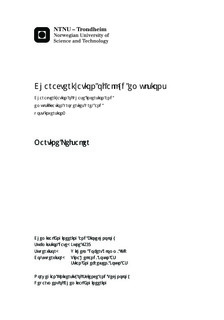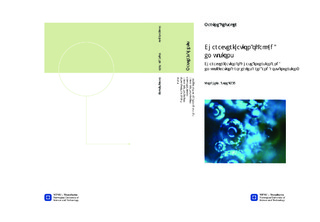| dc.description.abstract | This report presents the results of work performed in cooperation with the Binding lab (Jotun AS) and the Colloid and Polymer Chemistry group at Department of Chemical Engineering, Norwegian University of Science and Technology (NTNU).The research performed is on the emulsification process of alkyds by catastrophic phase inversion (CPI). Focus has been on the development of emulsion properties such as viscosity, conductivity and optical density, during the emulsification process. The definition of properties at inversion point, from a water-in-oil (w/o) to an oil-in-water (o/w) continuous emulsion, and the influence changes in these properties have on emulsion quality. The techniques used to investigate the properties are the conductivity, the e-critical cell, the Near infrared spectroscopy (NIR) and a cone and plate rheometre. One emulsification has also been evaluated using Nuclear magnetic resonance (NMR). A brief introduction to alkyds and alkyd emulsions is provided along with general theory on surfactants and emulsification procedures. Trends that illustrate the importance of the development of, and changes in, these properties on the emulsification process and emulsion quality has been investigated. Emulsifications with alternative emulsification systems and process conditions were performed in order to investigate possible deviations from the trends further illustrating the importance of the property development. The reference system proves to be a robust system with a clear trend in the development of the properties. The emulsion quality for the reference system, determined by the droplet size distribution, was not significantly affected by small deviations and failures in the process conditions. The reference system shows clear trends in the property development, and especially the viscosity proves to be an important property. Surfactants, and surfactant amounts and combinations, seems to be important for the viscosity development, along with the alkyd properties.The trend showed that the emulsification process could be divided in to four periods. First an introduction period, then a period where significant changes in the properties occur prior to a period covering the inversion point and finally a period where the inverted emulsion is stabilized. | nb_NO |

